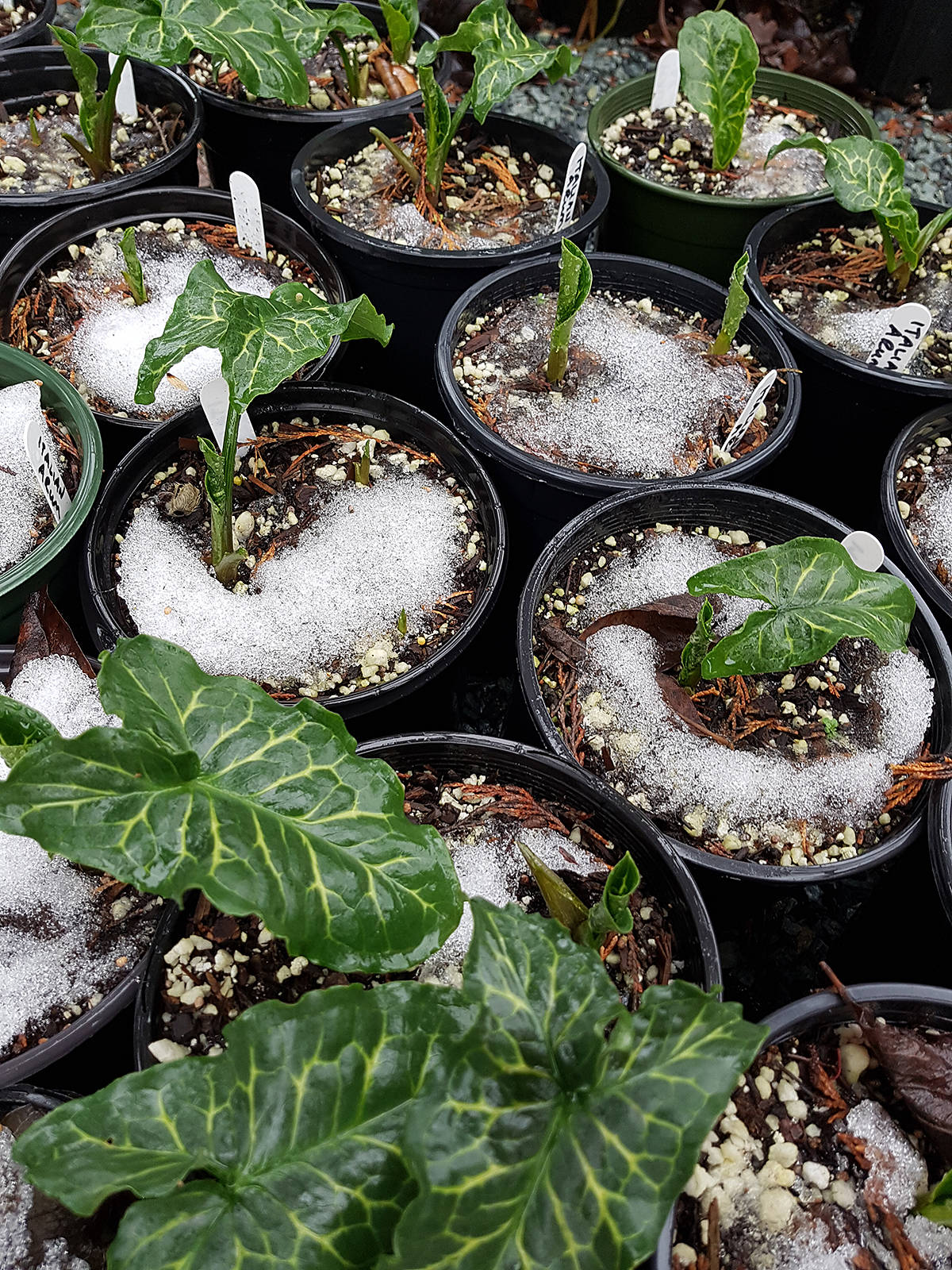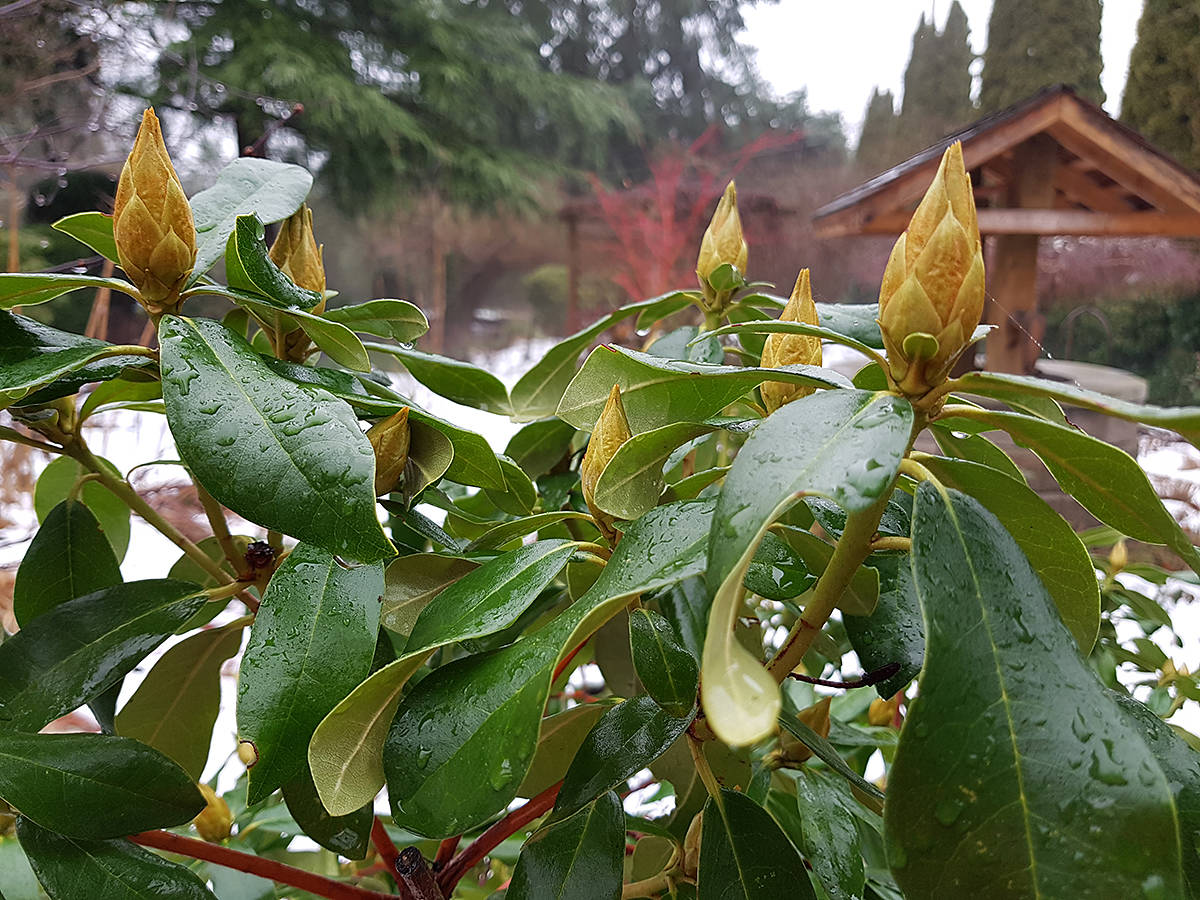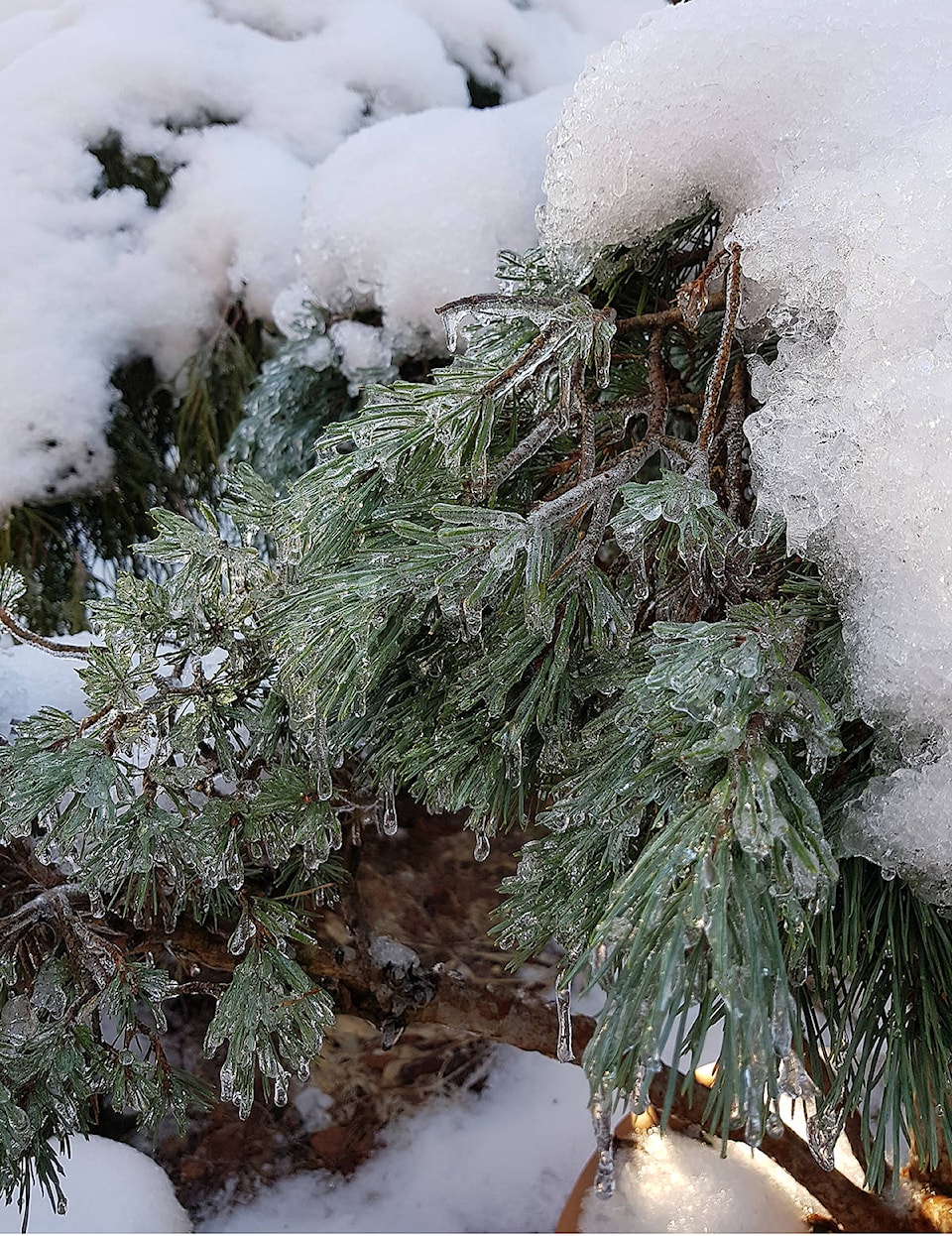It’s been a wild west winter, thus far.
Happy New Year to all our gardeners out there, and it is our sincere hope that your trees and shrubs made it through the incredible ice storm of 2017.
We have had many calls lately with concerns about what has happened these past couple of weeks.
First, all the perennials are just fine – they are happily frozen beneath the ground so they really don’t care what is happening above the surface.
As for the trees and shrubs, that is a different matter.
When we get heavy snow, we always advise people, wherever possible, to try and knock some of the snow off the branches to alleviate the pressure on the limbs.
This is only possible when we get the light fluffy snow that we are used to.
Knocking that snow off cedars, boxwoods etc relieves the stress on the trees/shrubs and they are less likely to snap.
That ice storm, however, was a different matter.
Once the ice forms on the branches, you are advised NOT to touch them.
Where the ice is too thick and too heavy for the branches to support it, they will snap – as we have seen so much on the news this year.
This is an excellent time to remind everyone that regular pruning of all the trees and shrubs in your garden will definitely help prevent as much damage as others have seen.
We had an 80-foot Crimson King maple in our garden that has concerned me for a few years.
This fall, [my husband and a professional landscaper] Tom brought it down by 50 per cent - and thank goodness he did. It came through the ice storm with no damage whatsoever.
This was not the case for some of our clients who saw many maples split down the centre due to the weight of the ice.
Regular fall/winter pruning and thinning of deciduous trees cannot be stressed enough, and has never been more evident than this year.
That being said, once we get into January, my mind is already on spring.
Once the snow has cleared (and I hope it is for good), I shall be out looking for signs of life.
Our Arum italicum is in full leaf and was happily poking above the snow – even in the one gallon pots that have sat out in the elements, as are the hellebores that will start to bloom soon.
Buds on the rhododendrons are already swelling and the ornamental kale is still looking healthy.
Before we know it, the snowdrops and other spring bulbs will start to appear and I’m sure that the nasty ice storm memories will soon be behind us.
My tip for January/February is to keep an eye on the temperatures.
If it starts to warm up, the slugs will start to hatch and feed on any new tender growth they can find.
For us, the daylilies are always the first perennials to come up, so we make sure we start our cleanup of the beds sooner rather than later – if the leaves and debris cover the garden for too long, the slugs will hide underneath and enjoy munching on fresh foliage without our even noticing them.
Getting a jump start on the slugs at the beginning of their season is always first in my mind at this time of year.
– Pam Erikson is owner of Erikson’s Daylily Gardens and Perennials in 91ԭ��
and president of the 91ԭ�� Garden Club





